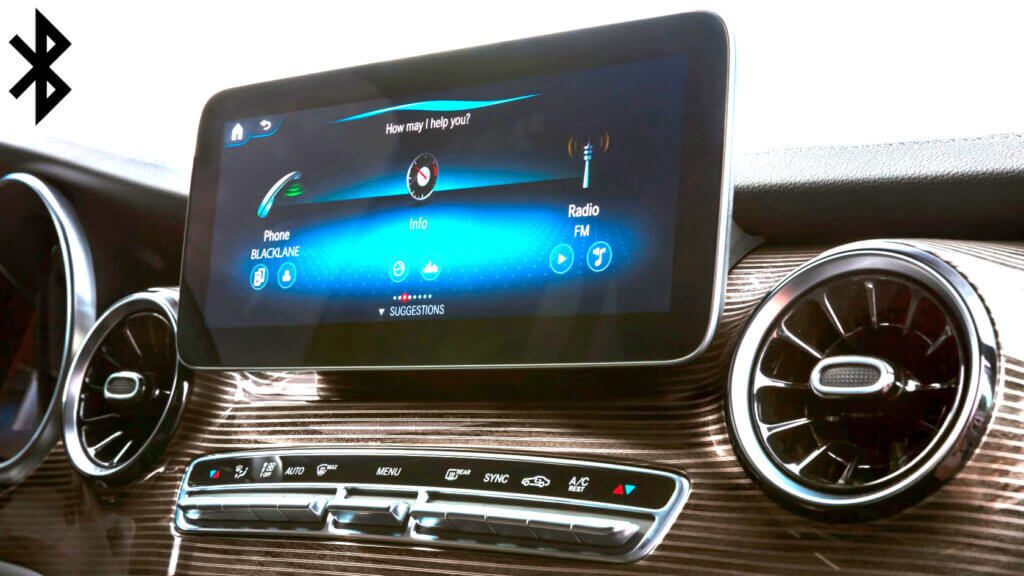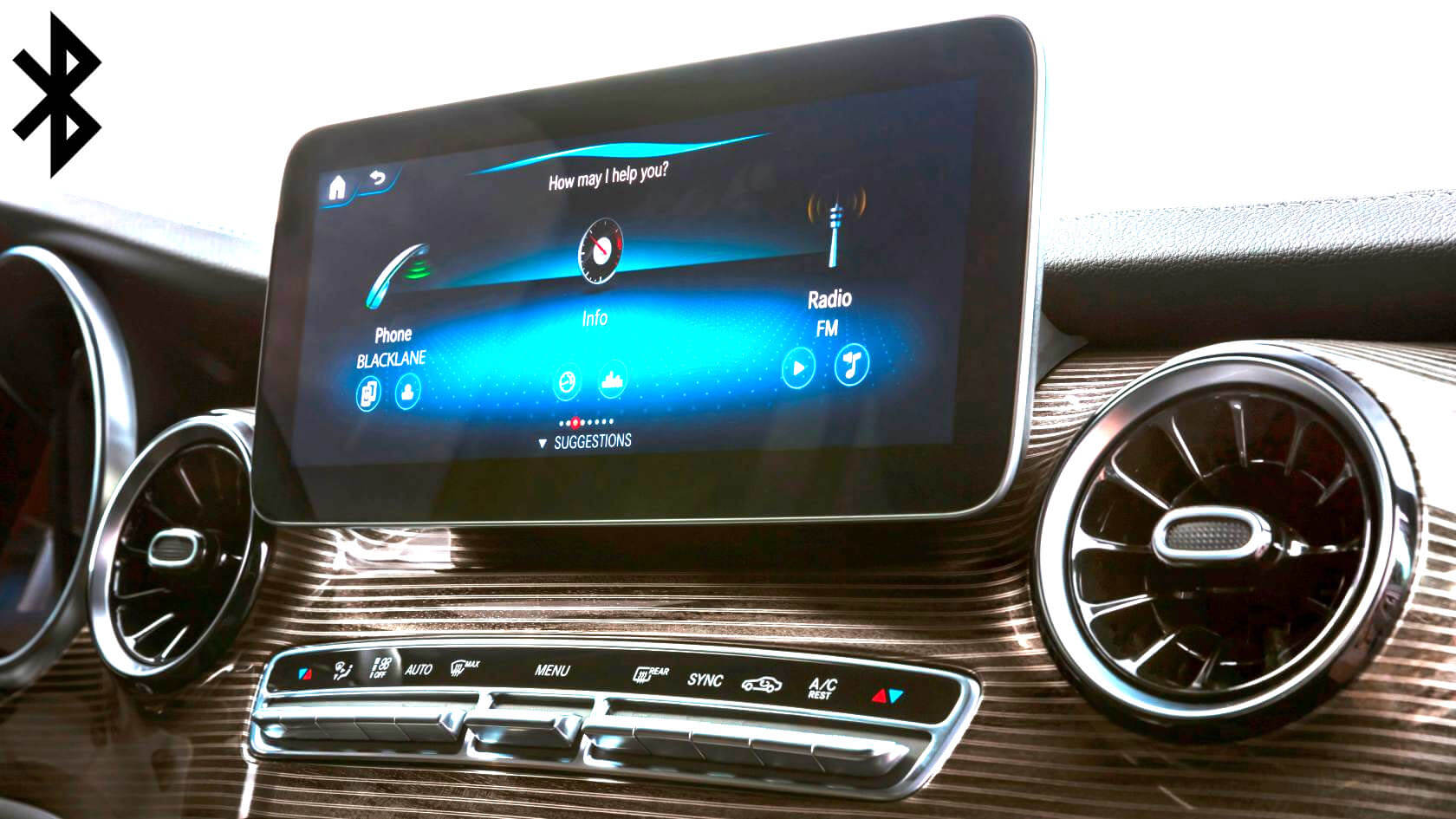Have you ever experienced frustration while trying to connect your phone to the MBUX stereo system via Bluetooth, only to be met with connectivity issues? We understand the annoyance that arises from such situations.

The seamless integration of smartphones with car entertainment systems has become a crucial part of our driving experience, making any hiccups in this process quite bothersome. In this guide, we will delve into the common Bluetooth problems that Mercedes-Benz MBUX users encounter and provide you with effective solutions to get your entertainment system back on track.
Common Causes of Bluetooth Problems
Before we dive into the solutions, it’s important to understand the potential culprits behind the Bluetooth issues you might be facing with your MBUX stereo system. These problems can stem from a variety of sources, ranging from software glitches to external factors.
Here are the common causes:
- Software Bugs: Like any technology, the MBUX system can occasionally experience software glitches that disrupt the Bluetooth connection.
- Compatibility Issues: Incompatibility between your smartphone’s operating system and the MBUX system can lead to connectivity problems.
- Signal Interference: Interference from other electronic devices or nearby signals can weaken the Bluetooth connection.
- Outdated Software: Running outdated software on either your phone or the MBUX system can cause connectivity issues.
- Network Congestion: A crowded Bluetooth network can lead to difficulty in establishing and maintaining connections.
Troubleshooting Procedures
1. Check Bluetooth Compatibility
Ensuring compatibility between your smartphone and the MBUX system is crucial for establishing a stable Bluetooth connection.
- Check Manufacturer’s Recommendations: Confirm that your smartphone’s make and model are listed as compatible with the MBUX system in the vehicle’s documentation.
- Update Smartphone Software: Make sure your smartphone’s operating system is up to date, as newer software versions often include bug fixes and improved compatibility.
- Update MBUX Software: If available, update the MBUX system to the latest software version. Manufacturers often release updates to address compatibility issues.
2. Clear Bluetooth Pairing
Clearing previous Bluetooth pairings can help eliminate any conflicting or corrupted connections.
- Remove Existing Pairings: In the MBUX system’s settings, find the list of paired devices and delete any existing pairings.
- Unpair on Phone: On your smartphone, navigate to Bluetooth settings and forget the MBUX system as a paired device.
- Re-Pair: Start fresh by initiating a new pairing between your smartphone and the MBUX system. Follow the on-screen prompts.
3. Minimize Signal Interference
Reducing signal interference can lead to a stronger and more stable Bluetooth connection.
- Move Electronic Devices: Ensure that other electronic devices emitting signals (such as Wi-Fi routers) are positioned away from the MBUX system.
- Reduce Nearby Devices: If possible, minimize the number of active Bluetooth devices in the vicinity, as too many connections can lead to interference.
4. Restart MBUX System
A simple restart can often resolve minor software glitches affecting Bluetooth connectivity.
- Restart MBUX: Turn off the vehicle, wait for a minute, and then restart the MBUX system.
- Restart Smartphone: Similarly, restart your smartphone to refresh its software and connections.
5. Update MBUX Firmware
Keeping your MBUX system’s firmware up to date can address software bugs and improve Bluetooth functionality.
- Check for Updates: Navigate to the MBUX system’s settings and look for an option to update the firmware.
- Follow Prompts: If an update is available, follow the on-screen instructions to download and install it.
6. Clear Cache and Data
Clearing the Bluetooth cache and data can help resolve connectivity issues caused by corrupted files.
- Access System Settings: In the MBUX system, go to the settings menu and find the Bluetooth section.
- Clear Cache: Look for an option to clear Bluetooth cache and confirm your choice.
- Clear Data: If available, also clear Bluetooth data. Note that this might remove saved pairings, so be prepared to re-pair your devices.
7. Reset Network Settings
Resetting network settings can resolve underlying connectivity issues that might be affecting Bluetooth.
- MBUX System: Navigate to the MBUX settings and find the option to reset network settings.
- Smartphone: Similarly, on your smartphone, reset network settings to their defaults.
8. Perform a Hard Reset
A hard reset can help resolve persistent software glitches affecting the MBUX system.
- MBUX System: Consult your vehicle’s manual to learn how to perform a hard reset on the MBUX system.
- Disconnect Battery: In some cases, disconnecting the vehicle’s battery for a few minutes can effectively perform a hard reset.
Performing these solutions can help address the Bluetooth problems you might be facing with your Mercedes-Benz MBUX stereo system. Each step is designed to tackle a specific aspect of the issue, from software bugs to compatibility concerns. Remember that technology can be complex, and sometimes, multiple attempts might be needed before finding the solution that works best for your situation.
Final Inputs
Your Mercedes-Benz MBUX stereo system is designed to provide seamless connectivity and entertainment during your drives. When Bluetooth problems arise, it’s important to approach them systematically, ruling out common causes and applying appropriate solutions. By doing so, you can once again enjoy the convenience of hands-free calling and wireless music streaming. Safe and happy driving!
If you find that these solutions don’t resolve your Bluetooth issues, it’s advisable to contact Mercedes-Benz customer support or visit a certified service center for more specialized assistance.
FAQs about MERCEDES-BENZ MBUX Stereo Bluetooth Problems
-
What should I do if my smartphone isn’t connecting to the MBUX stereo system via Bluetooth?
If you’re facing difficulty connecting your smartphone to the MBUX stereo system via Bluetooth, start by ensuring that both your smartphone and the MBUX system are in pairing mode. Make sure your smartphone’s Bluetooth is turned on and discoverable. On the MBUX system, access the Bluetooth menu and initiate the pairing process. If you’re still experiencing issues, try restarting both your smartphone and the MBUX system, as this can often resolve minor connectivity hiccups. If the problem persists, consider clearing the Bluetooth cache and data on the MBUX system and reattempting the pairing process.
-
Why does my Bluetooth connection keep dropping when using the MBUX system?
Bluetooth connections can sometimes drop due to interference or signal disruptions. Ensure that there are no other active Bluetooth devices in the vehicle that might be causing interference. Additionally, check for any electronic devices emitting signals (such as Wi-Fi routers) that could be interfering with the Bluetooth signal. If the problem persists, consider restarting both your smartphone and the MBUX system to refresh their connections. If the issue continues, updating the firmware of both your smartphone and the MBUX system might help address compatibility and stability concerns.
-
My smartphone is paired with the MBUX system, but I can’t hear any sound through the speakers. What’s wrong?
If you’re unable to hear sound from your smartphone through the MBUX system’s speakers, there might be a configuration issue. First, ensure that the volume on both your smartphone and the MBUX system is turned up. Next, check the audio source settings on the MBUX system to ensure that Bluetooth audio is selected. If you still can’t hear any sound, try unpairing and re-pairing your smartphone with the MBUX system. If the problem persists, there might be a software glitch. Restarting both devices and updating their firmware could help resolve the issue.
